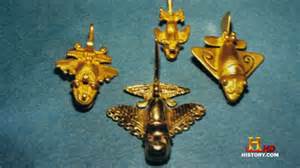
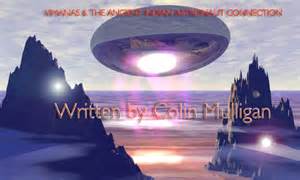
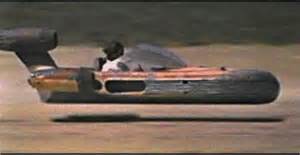
Vedic Aeronautics or Vaimanika Saastra
Bacon wrote magnificently about the modern sciences evolving from the old.
" Solomon saith " There is no new thing upon the earth" ! All novelty is but oblivion !
There is an abstruse astrologer that saith " Were it not for two constants, no human being would live"
1. The fixed stars ever maintain the like distance from one another and never come closer to one another nor move furthur asunder
2 . The diurnal motion perpetually keepeth time "
When Erich von Daniken wrote about the Chariots of the Gods being UFOs, nobody took him seriously. They were called Vimanas in the Indian Saastras. Now Western scholars like Stephen Knapp, Childress and Hoagland have confirmed his theories.
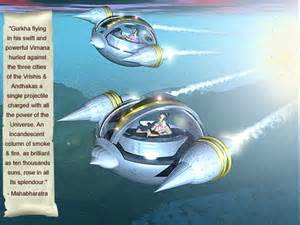
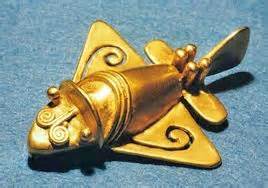
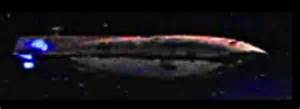
Modern sciences evolved from ancient sciences
We find that Sir Erasmus Darwin and Charles Darwin drew their inspiration from two Indian theories ( The Law of Metempsychosis and the Theory of Ten Incarnations). 600 years before Liebniz and Newton, Calculus existed in India. That is why we quoted Solomon that there are no new things upon the earth and new concepts are reproductions of the old.
The author Hoagland quotes Col Olcott
Vimanas - The Ancient
Indian Astronaut Connection
Highly advanced Ancient Indian Flying Machines, the Chariots Of The Gods
300 types of UFOs ( anti-gravity crafts ) Saubas , Vimanas are documented in
detail in the Shastras. Some are triple floors or even flying cities from
other Planets ~ Saubas
The Vaimaniko-Shastra
The Vaimdika-Shastra is a highly detailed description of Vimanas, and it is
given great credence in a number of books and articles. These include the
writings of Kanjilal, Nathan, and Childress. In particular, the Indian
ufologist Kanishk Nathan wrote that the Vaimdnika-Shastra is an ancient
Sanskrit text that "describes a technology that is not only far beyond the
science of the times but is even way beyond the possible conceptual and
scientific imagination of an ancient Indian, including concepts such as
solar energy and photography."
The ancient Indians themselves wrote entire flight manuals on the control of
various types of Vimanas, of which there were basically four: the Shakuna
Vimana, the Sundara Vimana, the Rukma Vimana and the Tripura Vimana.

"The ancient Hindus could navigate the air, and not only navigate it, but
fight battles in it like so many war-eagles combating for the domination of
the clouds. To be so perfect in aeronautics, they must have known all the
arts and sciences related to the science, including the strata and currents
of the atmosphere, the relative temperature, humidity, density and specific
gravity of the various gases..."
~ Col. Henry S Olcott (1832 - 1907) American Author, attorney, Philosopher
About David Hatcher
Childress' book " The Vimana Aircraft of Ancient India and Atlantis",
Therese Welsh writes
If you’re into alternative theories of history, eventually you’ll come across books by David Hatcher Childress. I admit I avoided them for some years, as they seemed too far out on the fringe even for me. But I could not resist this book about ancient flying machines when I found a mint-condition copy at a used book sale. Childress is not the first author to write about the “vimanas” mentioned in an ancient manuscript from India called the Mahabarata. Other authors have felt this puzzling source not only tells us about sophisticated flying ships, but also tells of nuclear wars raining terrible destruction on an apparently highly advanced civilization.
This particular Childress book is a hodge-podge of essays, pictures, and a complete translation of the “Vymaanika-Shaastra or Science of Aeronautics,” purportedly a part of the famous Mahabarata, and found in an Indian library in 1908. This version is translated from the Sanskrit by one G.R. Joyser. The illustrations in the book make it worthwhile, as they are gathered from many sources and give numerous renditions of what the vimanas (from the Rama Empire of India) and the vailxi (from Atlantis) looked like. Okay, so these are just drawings and may arise only out of someone’s imagination, but we cannot forget that much technology of today was predicted by novelists of yesterday.
Stephen Knapp writes
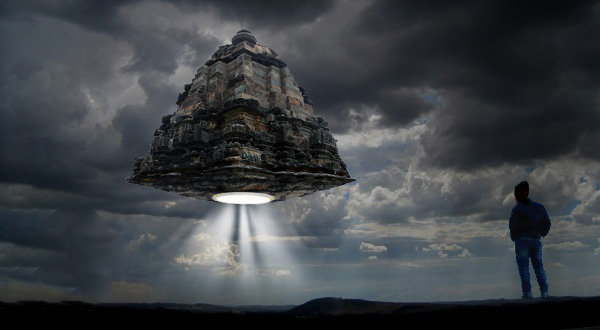
First of all we need to understand that the Vedic conception of universal time is divided into different periods. For example, a period called one day of Brahma is equivalent to 4,320,000,000 of our years on earth. Brahma's night is equally as long and there are 360 of such days and nights in one year of Brahma. Each day of Brahma is divided into one thousand cycles of four yugas, namely Satya-yuga, Treta-yuga, Dvapara-yuga, and finally the Kali-yuga, which is the yuga we are presently experiencing. Satya-yuga lasts 1,728,000 years, and is an age of purity when all residents live very long lives and can be fully developed in spiritual understanding and mystical abilities and remarkable powers. Some of these abilities, or mystic siddhis, include changing one's shape, becoming very large or microscopically small, becoming very heavy or even weightless, securing any desirable thing, becoming free of all desires, or even flying through the sky to wherever one wanted to go on one's own volition. So at that time, the need for mechanical flying machines was not necessary.
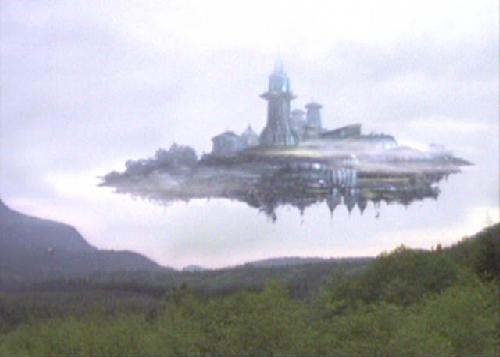
As the yugas continued, the purity of the people, along with their mystical
abilities, decreased by 25% in each age. The age of Treta-yuga lasts 1,296,000
years. During that age, the minds of humanity became more dense, and the
ability for understanding the higher spiritual principles of the Vedic path
was also more difficult. Naturally, the ability to fly through the sky by
one's own power was lost. After Treta-yuga, Dvapara-yuga lasts 864,000 years,
and Kali-yuga lasts 432,000 years, of which 5,000 have now already passed. At
the end of Kali-yuga, the age of Satya-yuga starts again and the yugas
continue through another cycle. One thousand such cycles is one day of Brahma.
Now that we are in Kali-yuga, almost all spiritual understanding disappears,
and whatever mystical abilities that remain are almost insignificant.
It is explained that it was not until the beginning of Treta-yuga that the development of vimanas took place. In fact, Lord Brahma, the chief demigod and engineer of the universe, is said to have developed several vimanas for some of the other demigods. These were in various natural shapes that incorporated the use of wings, such as peacocks, eagles, swans, etc. Other vimanaswere developed for the wiser human beings by great seers of Vedic knowledge.
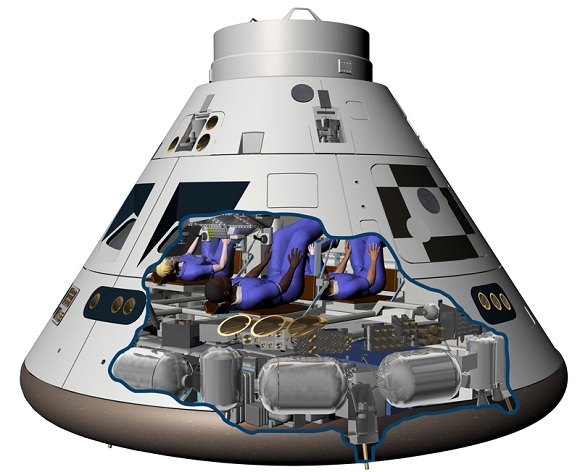
In the course of time, there were three basic types of vimanas. In Treta-yuga, men were adept in mantras or potent hymns. Thus, the vimanas of that age were powered by means of knowledge of mantras. In Dvapara-yuga, men had developed considerable knowledge of tantra, or ritual. Thus, the vimanas of Dvapara-yuga were powered by the use of tantric knowledge. In Kali-yuga, knowledge of both mantra and tantra are deficient. Thus, the vimanas of this age are known as kritaka, artificial or mechanical. In this way, there are three main types of vimanas, Vedic airplanes, according to the characteristics of each yuga.
Of these three types, there is listed 25 variations of the mantrika vimanas, 56 variations of the tantrica vimanas, and 25 varieties of the kritakaah vimanas as we find today in Kali-yuga. However, in regard to the shape and construction, there is no difference between any of these vimanas, but only in how they were powered or propelled, which would be by mantras, tantras, or mechanical engines.
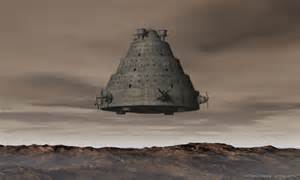
The controversial text known as Vimaanika Shastra, said to be by Maharshi Bharadwaja, also describes in detail the construction of what is called the mercury vortex engine. This is no doubt of the same nature as the Vedic Ion engine that is propelled by the use of mercury. Such an engine was built by Shivkar Bapuji Talpade, based on descriptions in the Rig-veda, which he demonstrated in Mumbai (Bombay), India in 1895. I more fully explained this in Chapter Three of this volume. Additional information on the mercury engines used in the vimanas can be found in the ancient Vedic text called the Samarangana Sutradhara. This text also devotes 230 verses to the use of these machines in peace and war. We will not provide the whole description of the mercury vortex engine here, but we will include a short part of William Clendenon's translation of the Samarangana Sutradhara from his 1990 book, Mercury, UFO Messenger of the Gods:
More info at www.stephen-knapp.com
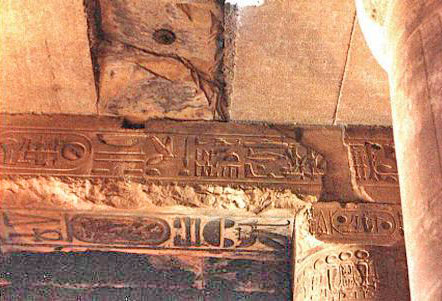
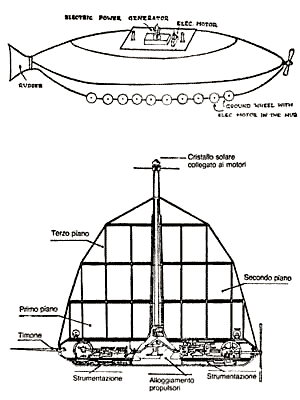
In the videos, you will find the word "Occult" used, generally referring to Vedic Knowledge. The secret societies of the West are societies rich in Esoterica or esoteric knowledge.